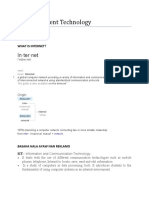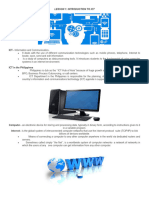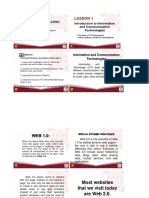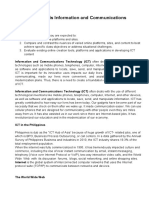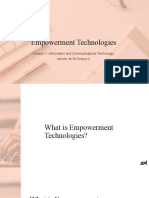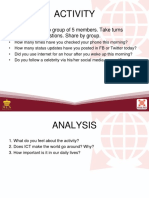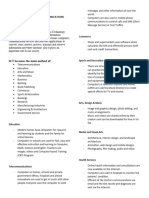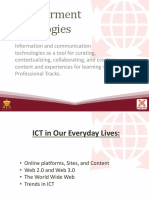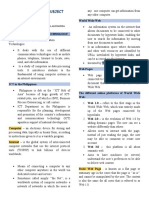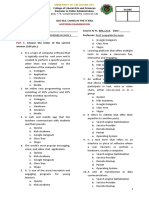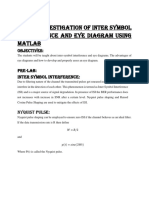0% found this document useful (0 votes)
69 views5 pagesWhat Is It: Information and Communications Technology (ICT)
The document provides information on various topics related to information and communication technologies (ICT). It discusses what ICT refers to, including technologies used to gather, create, edit, display and share information electronically. It also describes the Internet as a system that allows computer networks to interconnect globally and how it has revolutionized communication. The evolution of the World Wide Web from static Web 1.0 pages to dynamic Web 2.0 is outlined. Trends in ICT mentioned include online platforms, convergent technologies, social media, assistive media, mobile technologies, and online systems.
Uploaded by
Royce RoblesCopyright
© © All Rights Reserved
We take content rights seriously. If you suspect this is your content, claim it here.
Available Formats
Download as DOCX, PDF, TXT or read online on Scribd
0% found this document useful (0 votes)
69 views5 pagesWhat Is It: Information and Communications Technology (ICT)
The document provides information on various topics related to information and communication technologies (ICT). It discusses what ICT refers to, including technologies used to gather, create, edit, display and share information electronically. It also describes the Internet as a system that allows computer networks to interconnect globally and how it has revolutionized communication. The evolution of the World Wide Web from static Web 1.0 pages to dynamic Web 2.0 is outlined. Trends in ICT mentioned include online platforms, convergent technologies, social media, assistive media, mobile technologies, and online systems.
Uploaded by
Royce RoblesCopyright
© © All Rights Reserved
We take content rights seriously. If you suspect this is your content, claim it here.
Available Formats
Download as DOCX, PDF, TXT or read online on Scribd
/ 5






